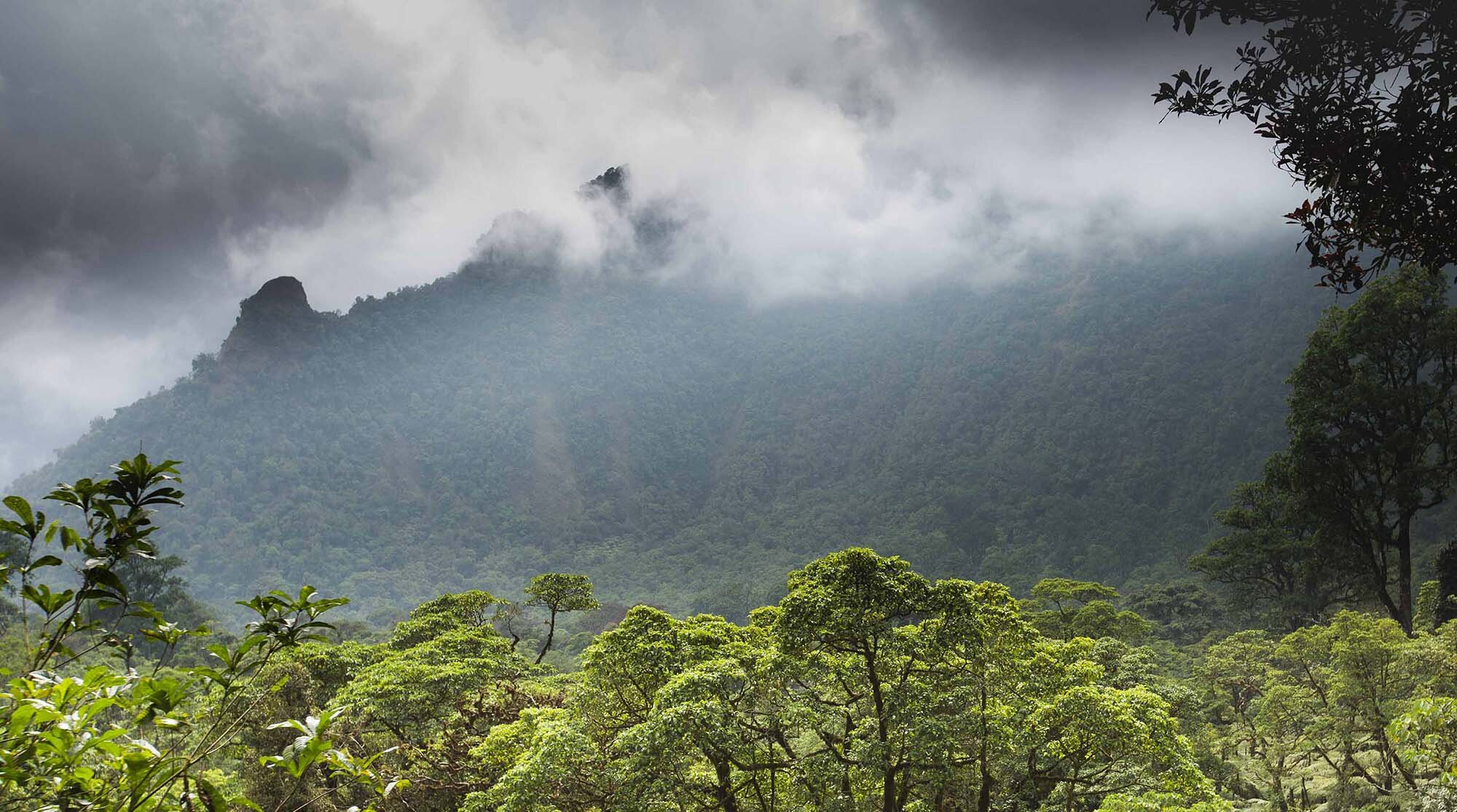
THE DRILL
One of Africa’s most endangered mammals
The Drill
Mandrillus leucophaeus
Mandrillus leucophaeus distribution, IUCN 2020
Found primarily in the West/Central African Rain Forests, the drill monkey is an IUCN endangered species throughout its range, both on the mainland and on Bioko Island. The drill is found in a very small geographic area with a high human density: Mandrillus leucophaeus leucophaeus lives from the Cross River in Nigeria to the Sanaga River in Cameroon and Mandrillus leucophaeus poensis is an endemic species of Bioko Island, where it extends throughout the southern part of the island in two small patches. Most of their suitable forest home continues to be lost due to unsustainable logging and poor farming practices. As a result of these threats, the IUCN Red Data List classified Drills among Africa’s most endangered mammals, and among African primates with the highest priority for conservation action in recognition of its taxonomic distinctiveness, restricted distribution, and degree of threat from hunting and habitat destruction. Drills are among the rarest and least-studied of all catarrhines. The continually declining Bioko Island drill population is currently being hunted for the commercial bushmeat trade at an alarming rate; in the past 13 years over 4,500 drill carcasses have been sold in the Island's illegal bushmeat market located in the capital city of Malabo. Based on recent surveys the estimated area of drill range has decreased from approximately 525 km2 in 1986, to 220 km2 today (Butynski and Koster, 1994; Cronin et al. 2010). This is most likely a result of the intense hunting pressure and high rate of capture of drills for the commercial bushmeat trade. The development of new roads now extending throughout the Gran Caldera and Southern Highlands Reserve (GCSH), have increased access to what has historically been the least accessible areas of Bioko Island. Although local wildlife patrols run by the Bioko Biodiversity Protection Program (BBPP) have been successful as a passive deterrence to hunting activities in the GCSH in the past, the high price paid for bushmeat on Bioko Island will likely drive illegal hunters into these areas and further jeopardize Bioko's remaining drills.
The continually declining Bioko Island drill population is currently being hunted for the commercial bushmeat trade at an alarming rate; in the past 13 years over 4,500 drill carcasses have been sold in the Island's illegal bushmeat market located in the capital city of Malabo. Based on recent surveys the estimated area of drill range has decreased from approximately 525 km2 in 1986, to 220 km2 today (Butynski and Koster, 1994; Cronin et al. 2010). This is most likely a result of the intense hunting pressure and high rate of capture of drills for the commercial bushmeat trade. The development of new roads now extending throughout the Gran Caldera and Southern Highlands Reserve (GCSH), have increased access to what has historically been the least accessible areas of Bioko Island. Although local wildlife patrols run by the Bioko Biodiversity Protection Program (BBPP) have been successful as a passive deterrence to hunting activities in the GCSH in the past, the high price paid for bushmeat on Bioko Island will likely drive illegal hunters into these areas and further jeopardize Bioko's remaining drills.
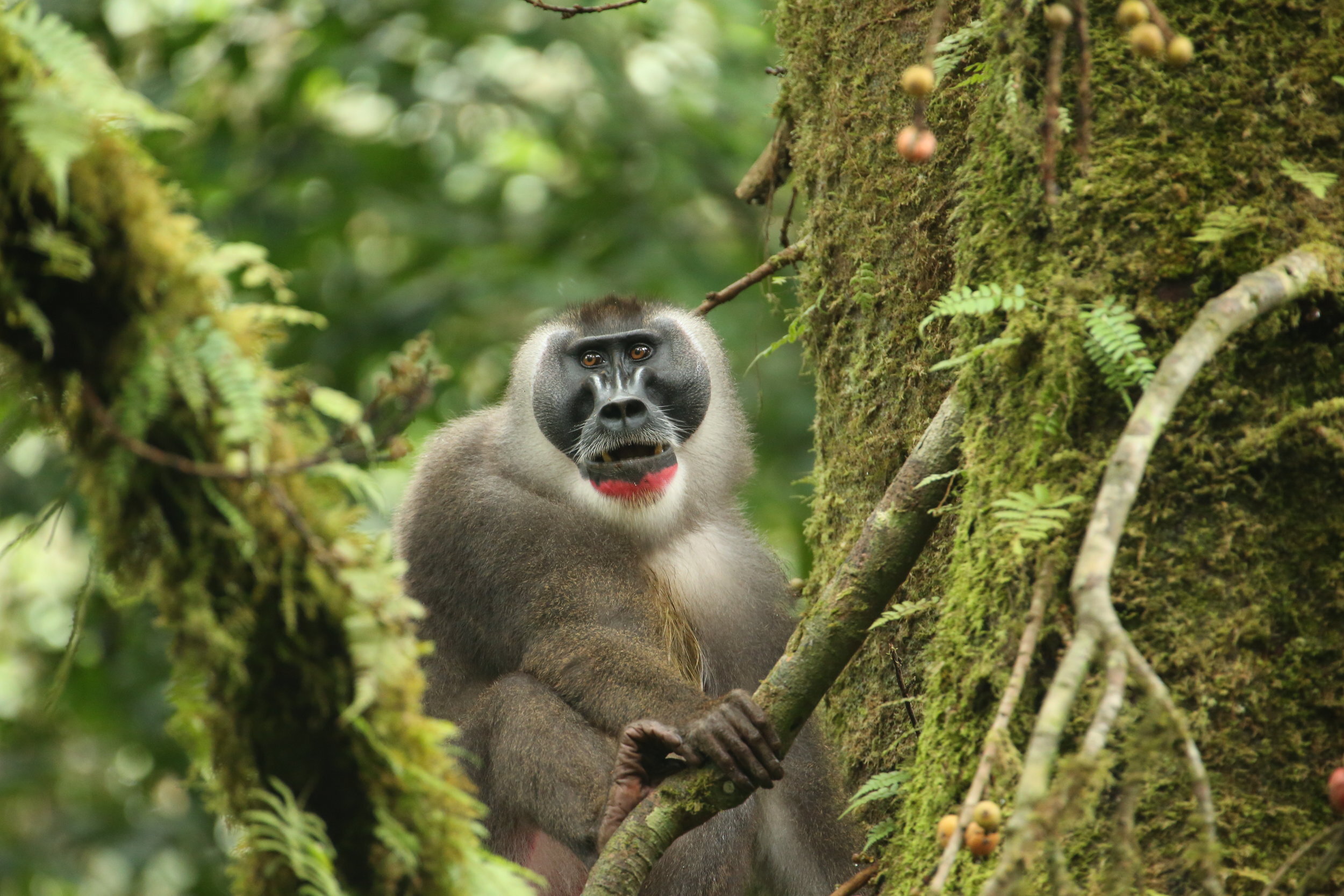
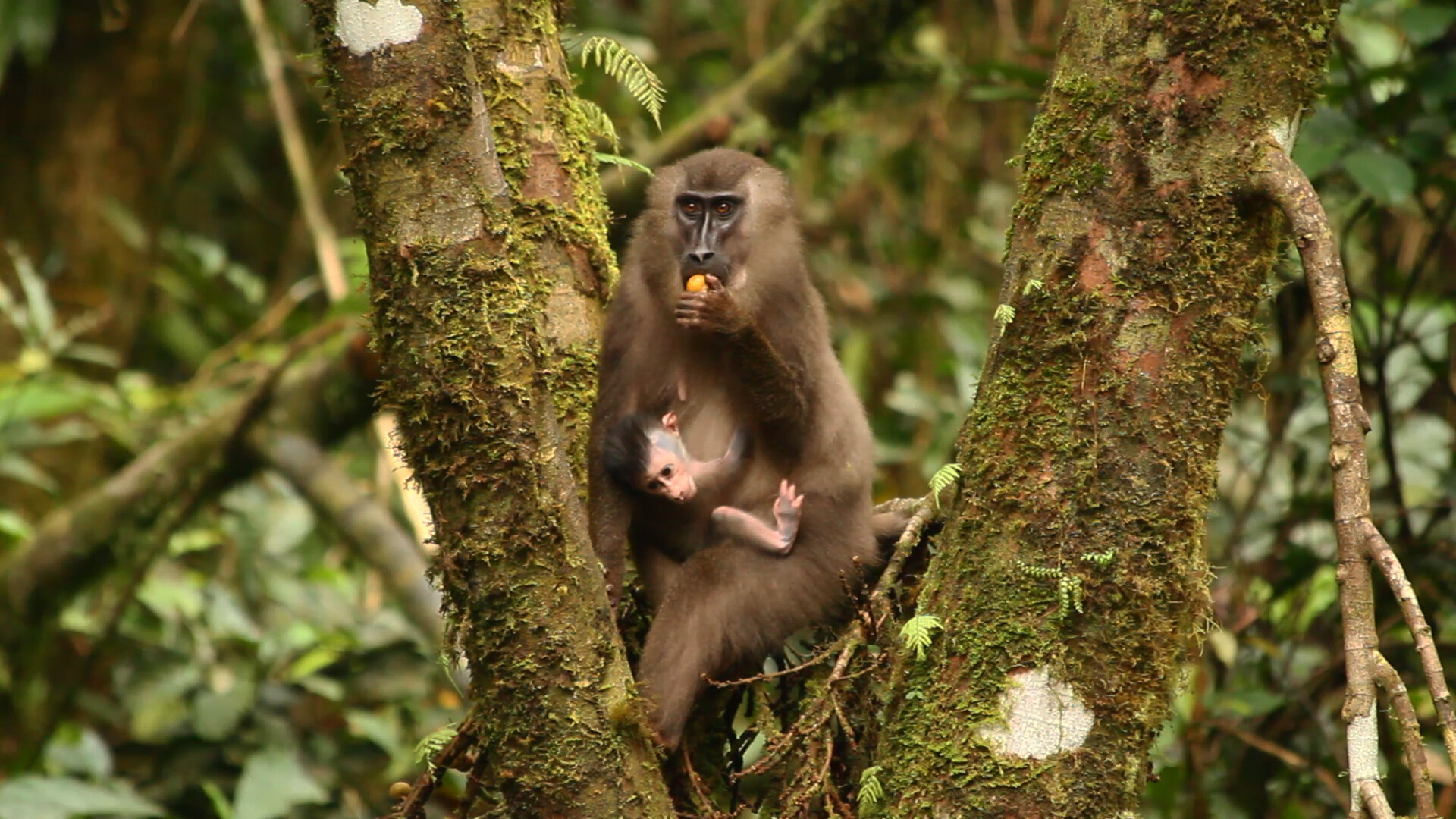
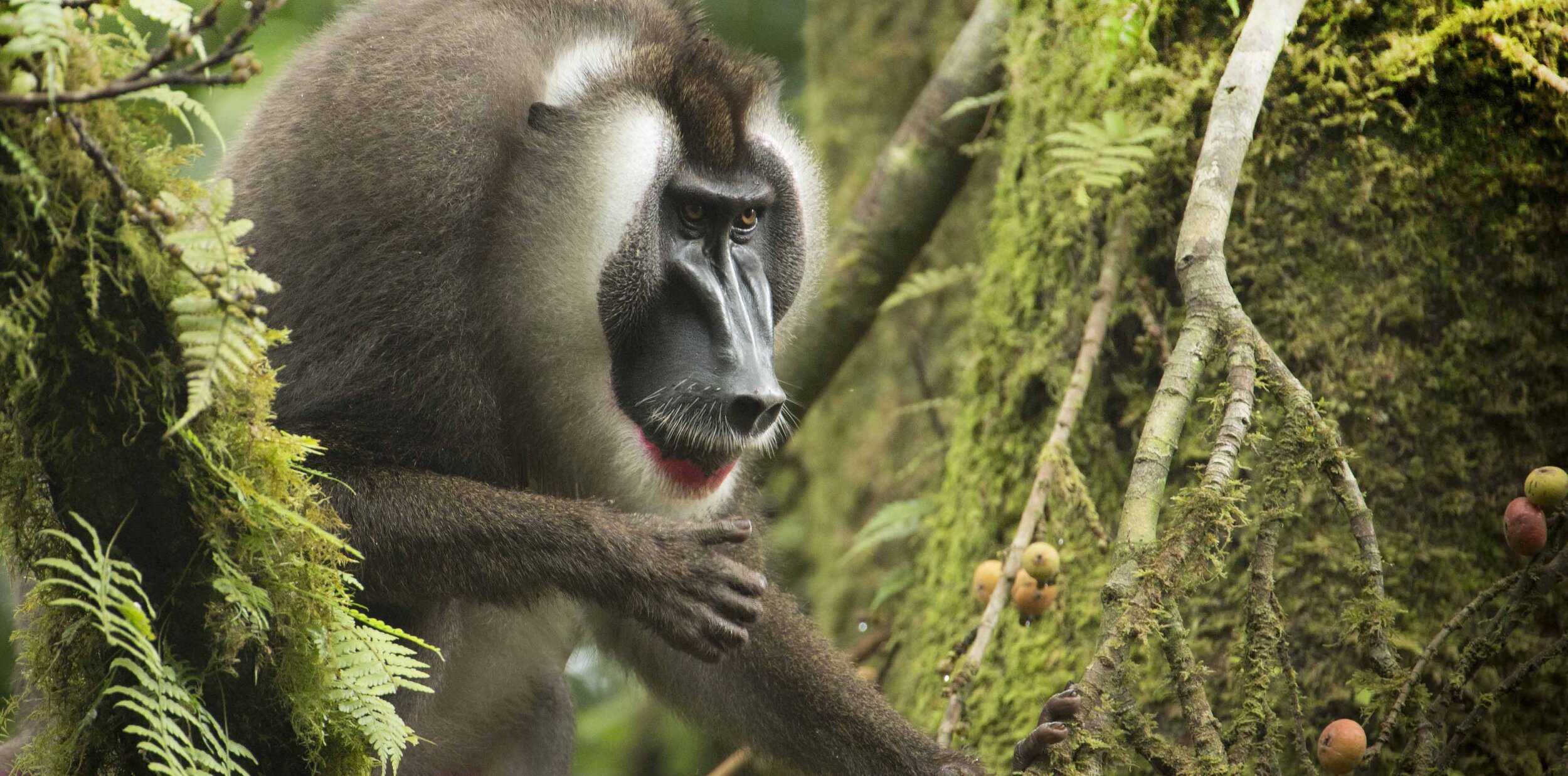
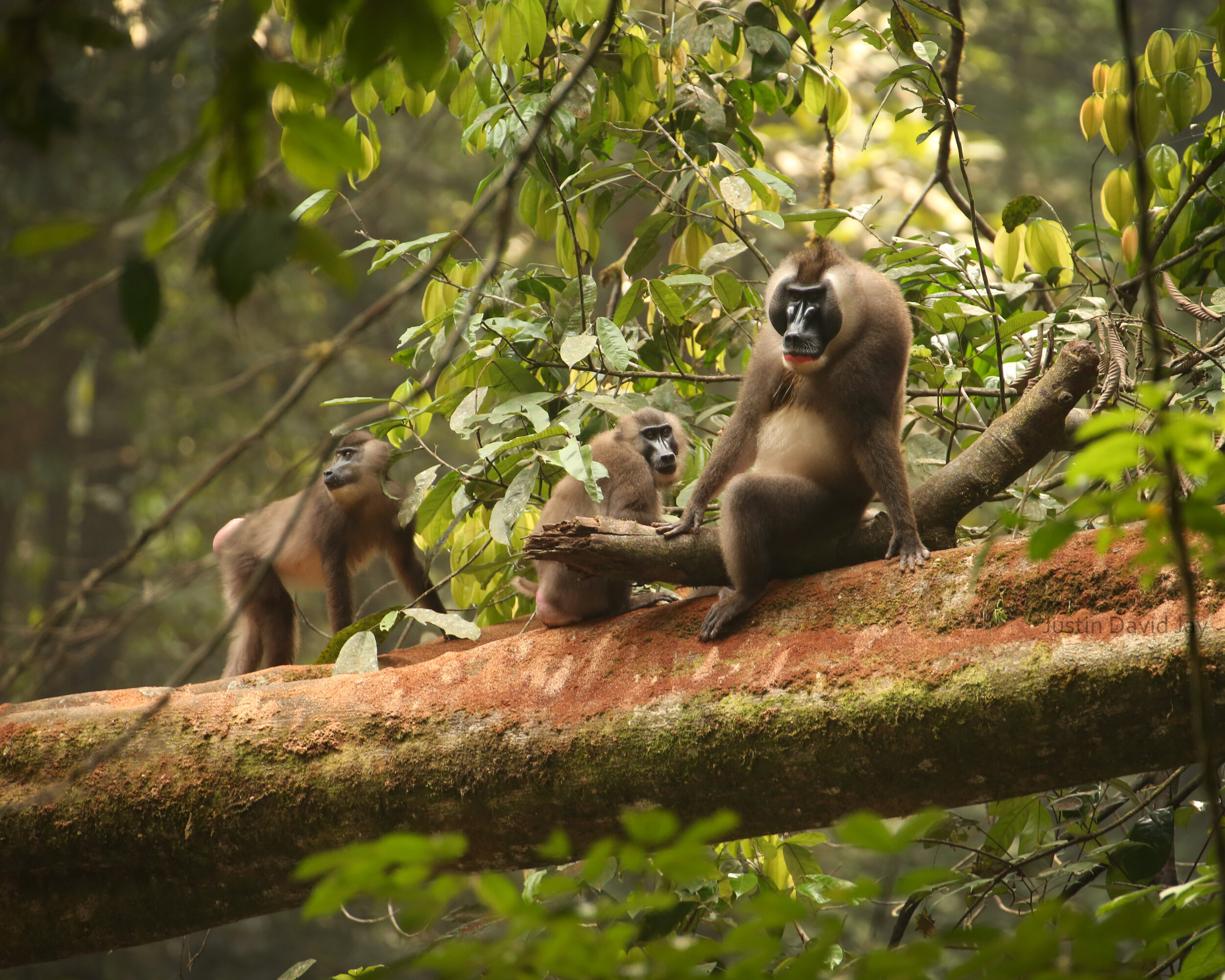
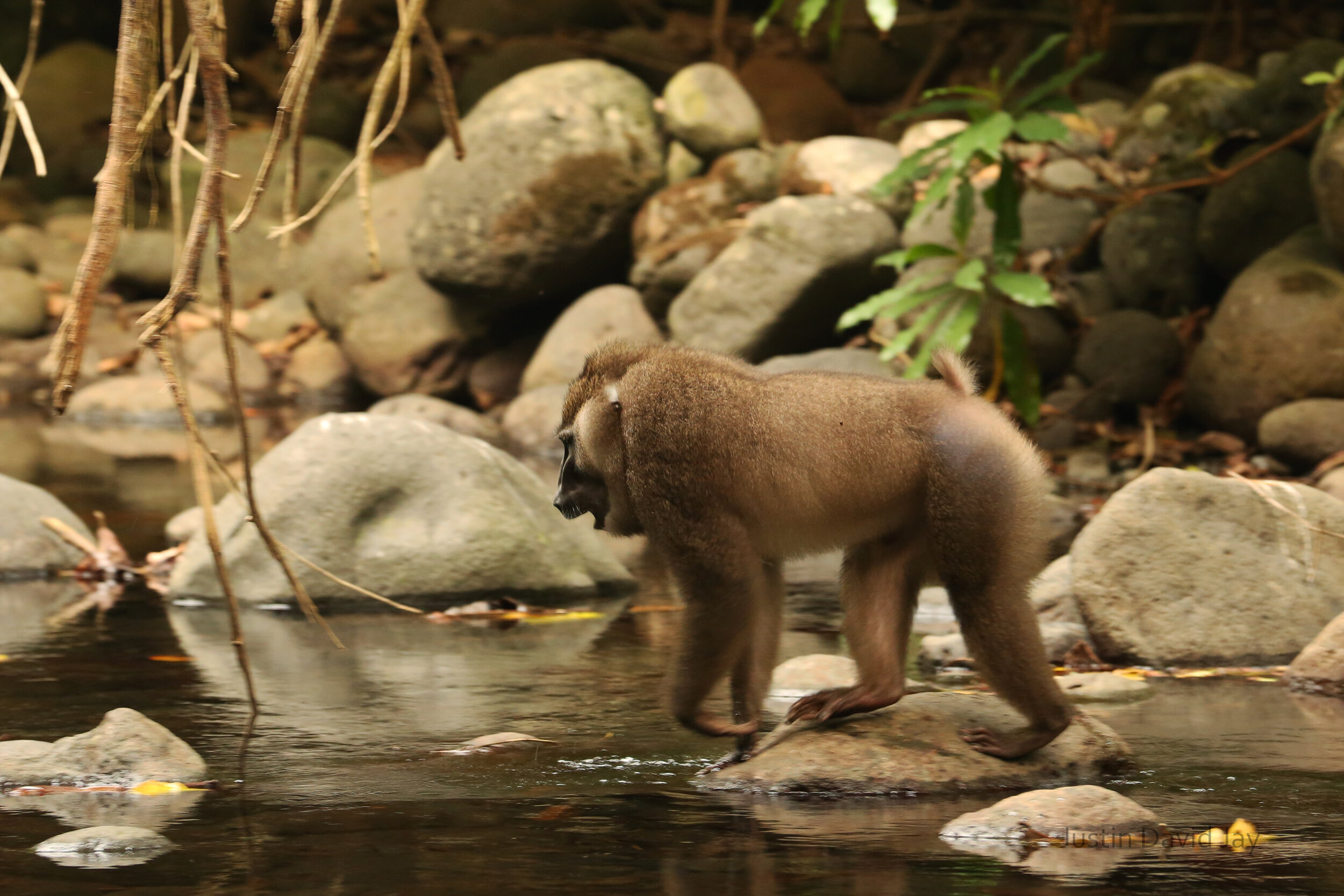
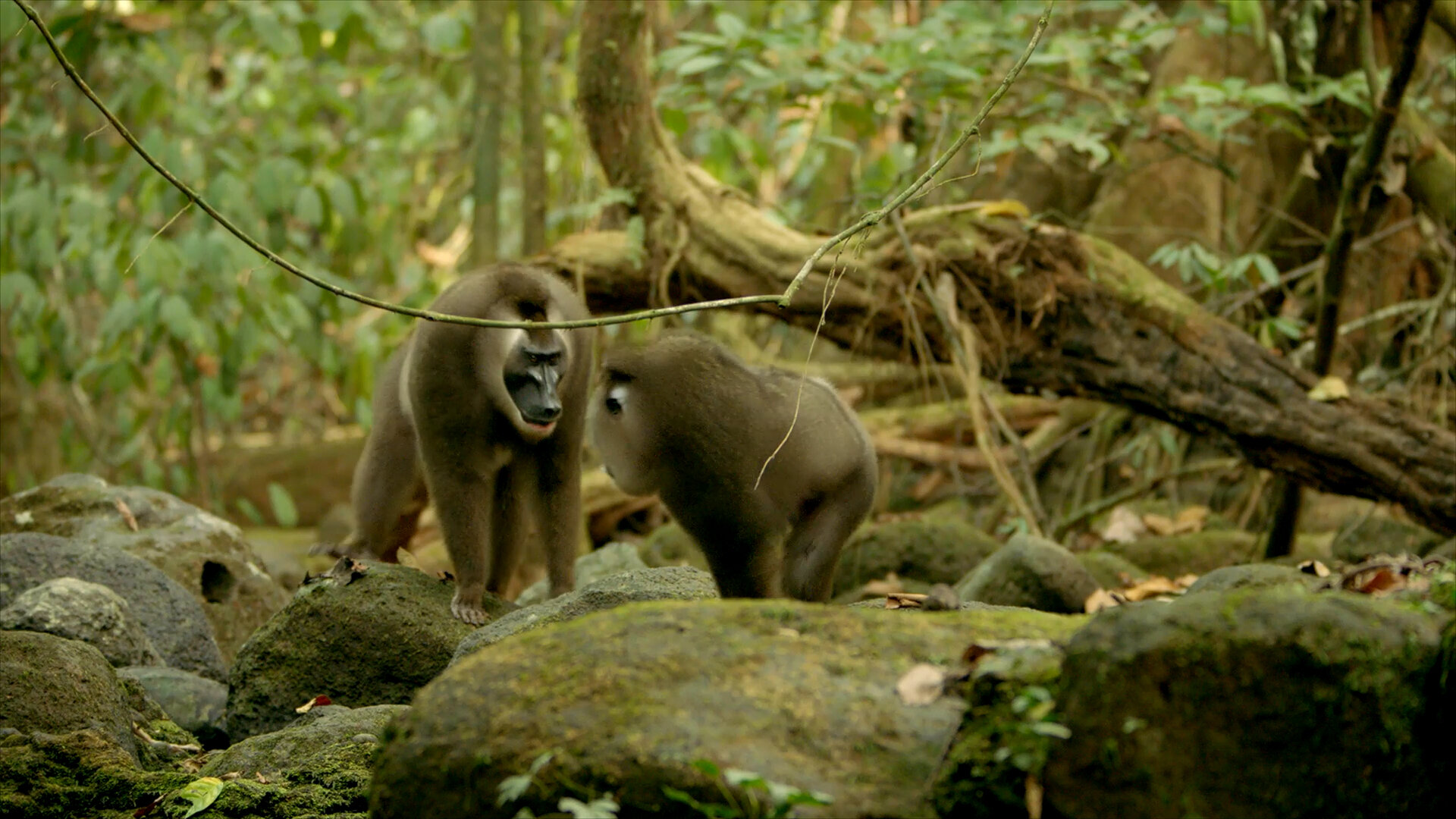
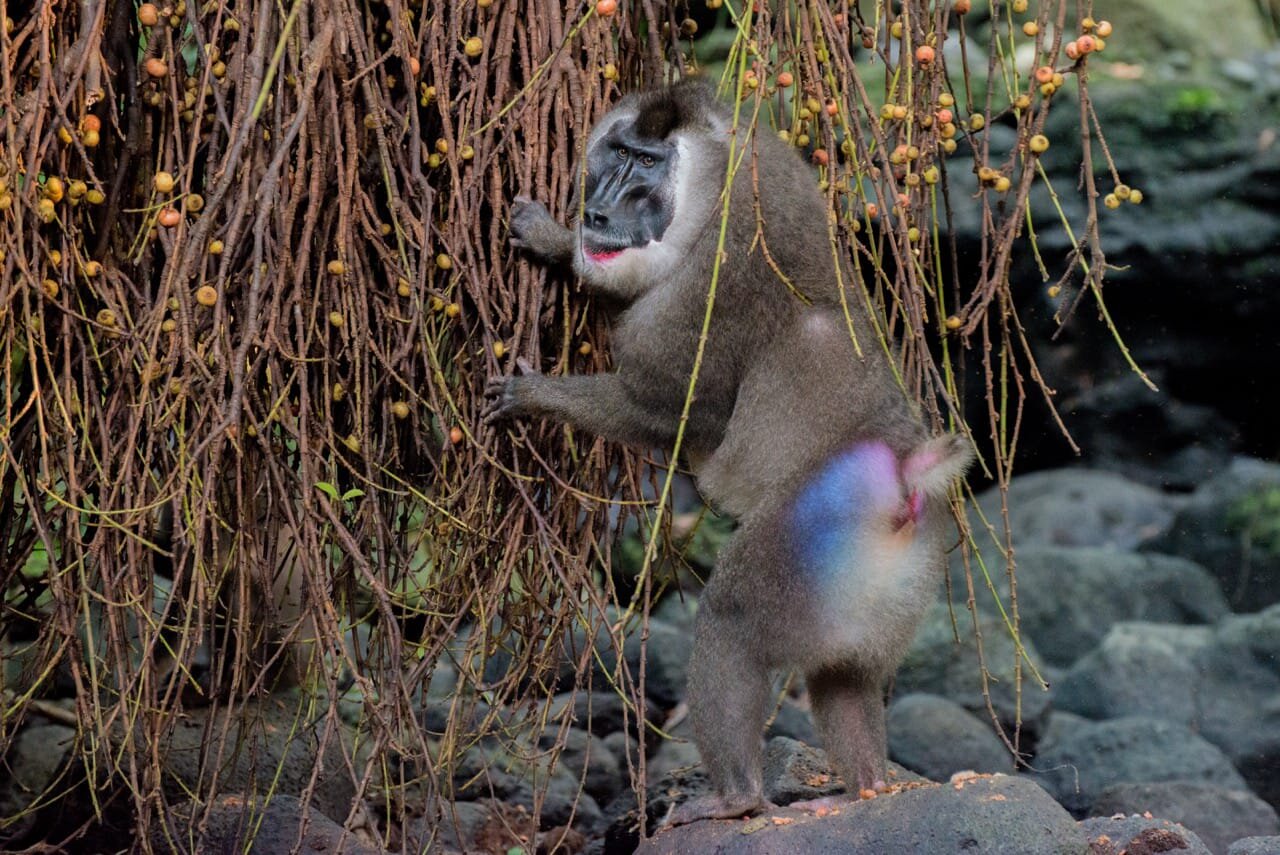
PHYLOGENY
Drills are the closest relatives of mandrills (Mandrillus sphinx), together forming a single genus, Mandrillus. In the past, drills and mandrills were considered 'forest baboons' and classified with savanna baboons in the genus Papio, and it was thought that they were closely related to gelada baboons, from the genus Theropithecus. Contrary to what was thought before and according to recent genetics and immunological studies, the genus Mandrillus is genetically closer to the gray or red-cappet Mangabey (Cercocebus torquatus) from the genus Cercocebus, one of the two species group of mangabeys, whereas baboons and geladas are more related to the albigena group.
DIET
There are three common feeding patterns to the genus Mandrillus, according to some studies: broad omnivorous diet, a strong predilection for fruit, this being 65% of their diet, up to 95% in times of high fruit availability, and changes in the composition of the diet according to the availability of fruit increasing the consumption of fallback foods.
Drills are omnivores and forage primarily on the ground. Their diet primarily consists of fruit (frugivorous) but may also rely heavily on plants and invertebrates, depending on the habitat and season. Some studies showed that the diet is highly conditioned by the type of habitat in which they are found. Significant differences have been found between the diet and the foraging strategies of Bioko drills that inhabit lowland and montane forests, as well as in other species such gorillas, indicating that it is essential to carry out studies focus on populations living along elevational gradients to deeply understand the factors that drive behavior ecology and intraspecific ecology. The Bioko drill exhibits two significantly different dietary patterns within the Gran Caldera and Southern Highlands Scientific Reserve depending on the fruit and herbaceous availability. When there is an abundance of fruit, like in the lowland forest, drills are primarily frugivorous. This was reported in mainland drills as well as in mandrills. Whereas, when there is fruit scarcity in habitats like the montane forest, drills are primarily folivorous, being the main component of the diet stem-pith and roots of terrestrial herbaceous plants.
As opportunistic foragers, drills have been observed eating a variety of food sources even including crabs, sea turtle eggs, and domesticated crops.
APPEARANCE AND SIZE
The genus Mandrillus comprises the two most colorful primate species, within primates and even within all mammals. Both mandrills and drills share blue, violet, and pinky rump and genitals, a feature that is unique in the primate world.
Drills are extremely sexually dimorphic, with males nearly three times the mass of females, with adult females ranging between 7.2–20.5 kg and median adult males 32.3 kg ranging between 19.8-45 kg. Adult drill males differ from females in exhibiting long canines and bony paranasal swellings, in addition to striking shiny black faces with a clearly delineated black area.
Male drills also exhibit other brilliant secondary sexual colors in addition to the genitals. They show a red horizontal band under the lower lip and red above the groin which can extend down the leg as far as the ankle.
Being not common in Old World Monkeys, and found in the genus Mandrillus, both male and female drills possess a sternal gland, which they use to rub robustly against tree trunks and vertical branches. They are characterized by modified hairs on the chest and it is more visible in alpha males, in which it is usually to perceive dark and wet hairs with glandular secretion.
GROUPS
Wild drill monkeys live in multi-male, multi-female groups which average approximately 20 individuals and are typically lead by a single dominant male. However, the number of individuals within a group can vary dramatically, from less than five to recorded aggregations of well over 400 drills in the mainland population. Even so, researchers usually find groups between 25-40 individuals.
Due to the groupings that can occur between different and unknown individuals during the formation of occasional supergroups, the presence of characters such as a bright chin or colorful groins can be key to avoiding the costs of a conflict and to assessing rivals quickly.
Drill social organization and group size dynamics remain poorly understood and highly debated, particularly in respect to the impact of ecological and environmental factors on these aspects of their natural history.
Do you know how a wild drill sounds like?
THREATS
Although bushmeat remains a reliable protein source for indigenous peoples, the hunting of endangered species for bushmeat is done almost exclusively to provide a luxury commodity to wealthy individuals who can afford such a delicacy. Bushmeat or “wet” markets exist throughout the world and continue to put a strain on the environment affecting both animal and human populations through the transmission of deadly diseases and pathogens such as COVID-19.
Drills are seriously threatened by hunting, habitat loss. On the mainland, mainly in Nigeria, drill populations are threatened by habitat degradation and fragmentation due to small scale agriculture farms and large plantations, including palm oil plantations, as well commercial logging in Cameroon.
Both on Bioko and on the mainland, drills are threatened by the construction of new roads and current human activities. This is not only causing fragmentation and habitat loss, it is also facilitating the access of hunters to the areas where drills are found.
On Bioko Island, one of the biggest threats to drill populations is illegal hunting. Their populations are estimated to have declined by up to 70% in the 30 years from 1986 to 2016, mainly due to hunting.
Even though a presidential decree in 2007 outlawed the hunting, sale, and consumption of primates, there is an extreme lack of compliance with environmental protection laws with little to no enforcement.
Drills have been the subject of far fewer field studies than their only congeneric, the mandrill. Additionally, all focal studies completed on the drill have been performed on the mainland subspecies, not the Bioko drill - the focus of The Drill Project. Information on the Bioko Island drill is found embedded in more general discussions of Bioko Island primates, particularly within reports on the local bushmeat trade. With the exception of the Drill Rehabilitation and Breeding Center in Nigeria, drills have bred poorly in captivity but have provided useful behavioral information.
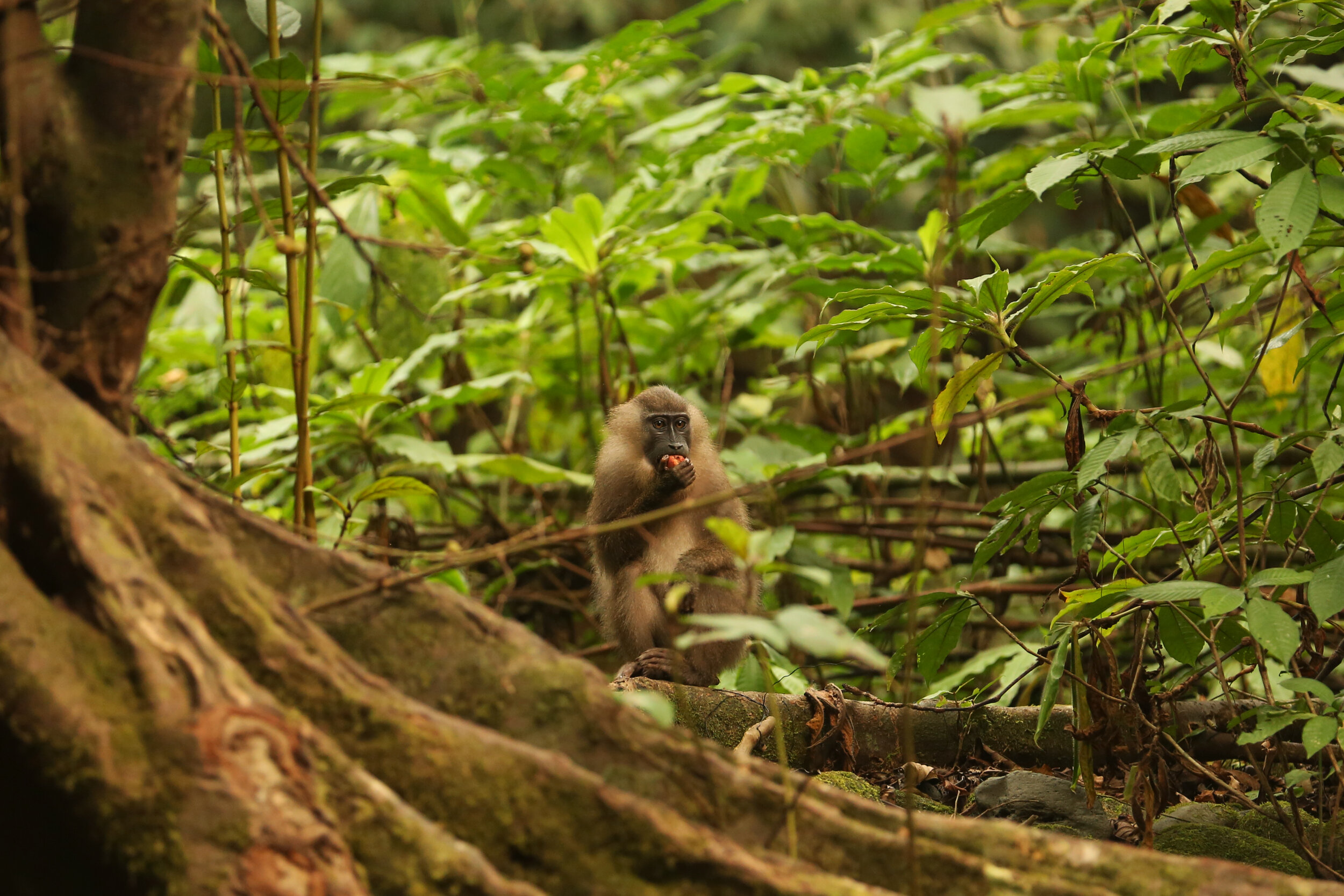
From the IUCN website:
This species occupies a relatively small range and is severely threatened by habitat loss. They have been totally displaced in the heart of their range, in Cameroon between Douala and Edea, due to clear-felling for chipboard factories and settlement. Reafforestation has involved the planting of non-palatable exotic species such as Eucalyptus and Gmelina arborea. Logging roads open areas to cultivators, causing further habitat loss, and allowing increased access by hunters. They are hunted for their meat, and all members of a harem are often shot en masse. Excessive hunting has resulted in a particularly marked declines in Nigeria and on Bioko. They are also frequently killed in defense of crops such as bananas, cocoa, and manioc, and this is likely to increase as cultivation expands.
